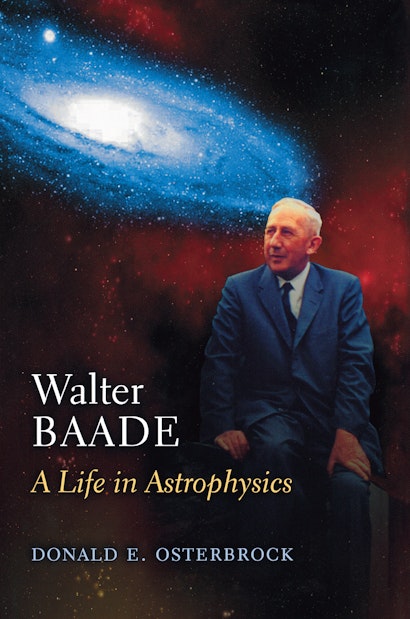History of Science & Knowledge
Walter Baade: A Life in Astrophysics


Hardcover
- Price:
- $75.00/£60.00
- ISBN:
- Published:
- Oct 14, 2001
- Copyright:
- 2002
- Pages:
- 288
- Size:
- 6 x 9.25 in.
- 28 halftones
- Main_subject:
- History of Science & Knowledge
ebook
Although less well known outside the field than Edwin Hubble, Walter Baade was arguably the most influential observational astronomer of the twentieth century. Written by a fellow astronomer deeply familiar with Baade and his work, this is the first biography of this major figure in American astronomy. In it, Donald Osterbrock suggests that Baade’s greatest contribution to astrophysics was not, as is often contended, his revision of Hubble’s distance and age scales for the universe. Rather, it was his discovery of two distinct stellar populations: old and young stars. This discovery opened wide the previously marginal fields of stellar and galactic evolution—research areas that would be among the most fertile and exciting in all of astrophysics for decades to come.
Baade was born, educated, and gained his early research experience in Germany. He came to the United States in 1931 as a staff member of Mount Wilson Observatory, which housed the world’s largest telescope. There, he pioneered research on supernovae. With the 100-inch telescope, he studied globular clusters and the structure of the Milky Way, every step leading him closer to the population concept he discovered during the wartime years, when the skies of southern California were briefly darkened. Most Mount Wilson astronomers were working on weapons-development crash programs devoted to bringing Baade’s native country to its knees, while he, formally an enemy alien in their midst, was confined to Los Angeles County but had almost unlimited use of the most powerful telescope in the world.
After his great discovery, Baade continued his research with the new 200-inch telescope at Palomar. Always respected and well liked, he became even more famous among astronomers as they shifted their research to the fields he had opened. Publicity-shy and seemingly unconcerned with publication, however, Baade’s celebrity remained largely within the field. This accomplished biography at last introduces Baade—and his important work—to a wider public, including the newest generation of skywatchers.
Awards and Recognition
- Walter Baade, Winner of the Leroy E. Doggett Prize